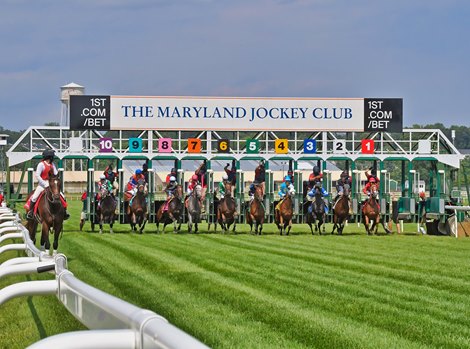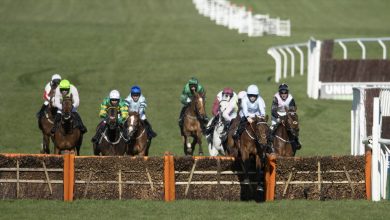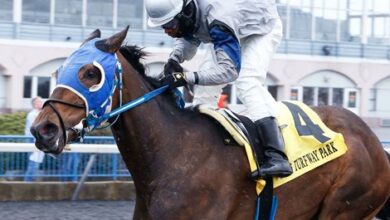Laurel Tops Mid-Atlantic With 273 Turf Races This Year

Laurel Park in 2023 was able to host 273 turf races, the most since 2019 and the highest number among all racetracks in the Mid-Atlantic region.
This year’s number was 18.6% higher than the 230 grass races conducted in 2022 at Laurel, where a number of protocols and structural improvements over the last few years have reaped dividends. The course is 142 feet wide, and the ability to move portable rails out 17, 35, 53, 70 and 87 feet allows for six different running lanes.
Average field size for the course was 9.2 horses per race over more than six months of competition at Laurel. Average field size for dirt races at Laurel from Jan. 1-Nov. 30 was 6.8.
The turf course at Colonial Downs is 180 feet wide. The Virginia racetrack in 2023 held 213 turf races–second highest in the region–over the course of its short 27-day meet.
Combined with the 72 grass races this year at Pimlico Race Course, Maryland owners and trainers had access to 345 turf events.
Beyond Laurel and Colonial Downs, here are the 2023 numbers for the rest of the region: Monmouth Park (183), Belmont Park (181), Saratoga Race Course (140), Delaware Park (122), Hollywood Casino at Penn National Race Course (89), Aqueduct Racetrack (78) and Parx Racing (47). The Laurel turf is integral not only to the Maryland racing product but the overall Mid-Atlantic racing product.
Due to a massive renovation of the dirt track which forced a move to Pimlico from mid-April through late August, only 133 grass races were run at Laurel in 2021. Pimlico that year offered 126 turf races for a Maryland total of 259. In 2019 there were 342 turf races at Laurel, and the course began to show wear and tear.
Logan Freeman, who has served as the Maryland Jockey Club turf consultant for the past several years, noted that in the fall of 2021 “agronomic processes were significantly altered. The new agronomic approach to both Laurel Park and Pimlico was developed to mirror that of high-end sports turf facilities, with adjustments made to accommodate equine racing.
“Agronomic practices like carbon-based fertility and overall biological soil management, in combination with other products to bolster the turf’s ability to withstand racing have become staples of the new program. These changes have resulted in turf with superior stress tolerance and recovery, two critical elements in management of an equine turf race surface.”
Freeman noted that in 2021 the turf crew “began the process of seeding into both courses a mixture of newer varieties of turf-type fescue and Kentucky bluegrass. The current seed mixture is Maryland-certified sod quality and therefore provides superior performance in our climate and in our application of equine racing. Aerification and compaction-relief efforts are varied and are routinely performed to encourage rooting and management of organic material (thatch) to the levels we desire to support a high-quality racing surface with optimal plant health.”
This press release has not been edited by BloodHorse. If there are any questions please contact the organization that produced the release.




